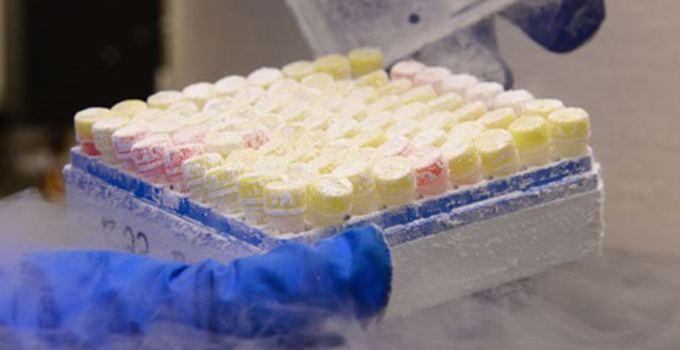The Ontario Tumour Bank evaluates the quality of tumour samples stored at ultra-low temperatures over the last decade

Before they are used in cancer research, tumour samples are often preserved in storage at extremely low temperatures, sometimes for several years. It is thought that these temperatures can stop all biological activity in samples and thus prevent DNA, RNA and other analytes from degrading, but this technique has never been tested for extended long-term preservation – or storage beyond a few years. Researchers at the Ontario Tumour Bank (OTB) recognized this concern and looked back over a decade of specimens to find out more.
In their recent study published in Biopreservation and Biobanking, they investigated how the quality of a sample may change over the course of 10 years in vapour-phase liquid nitrogen storage, also known as LN2 storage. They found evidence to show that LN2 storage preserves the quality of genetic material in tumour samples over several years and no connection between the age of a sample and its integrity – or how intact its genetic material is.
“Our unique study has provided us, and the greater research community, with reassuring results,” says Rachel Kelly, Research Technician at OTB and lead author of the study. “While the biobanking community generally accepts that samples stored at ultra-low temperatures are stable indefinitely, we were concerned that this assumption had not been thoroughly tested.”
Kelly’s findings apply to the hundreds of biobanks around the world that store samples at cryogenic temperatures, or temperatures below -150⁰C. This study validates that researchers will be able to analyze and investigate well-preserved tissues, whether they are two years old or 10 years old.
“For the thousands of patients who have donated their samples, they should know that their contribution may impact cancer research for years to come,” says Monique Albert, Director of OTB. “At OTB, we have the privilege of diligently preserving this resource and helping translate valuable patient samples into new research discoveries.”
OTB, which stores more than 185,000 samples donated by over 20,000 patients across Ontario, is one of six founding Charter Member Banks of the Canadian Tissue Repository Network (CTRNet). Through CTRNet, these six top-tier biobanks work to enhance the capacity and quality of biobanking across Canada. Read more about how OTB is collaborating to improve biobanking around the world, or visit their website at ontariotumourbank.ca.
